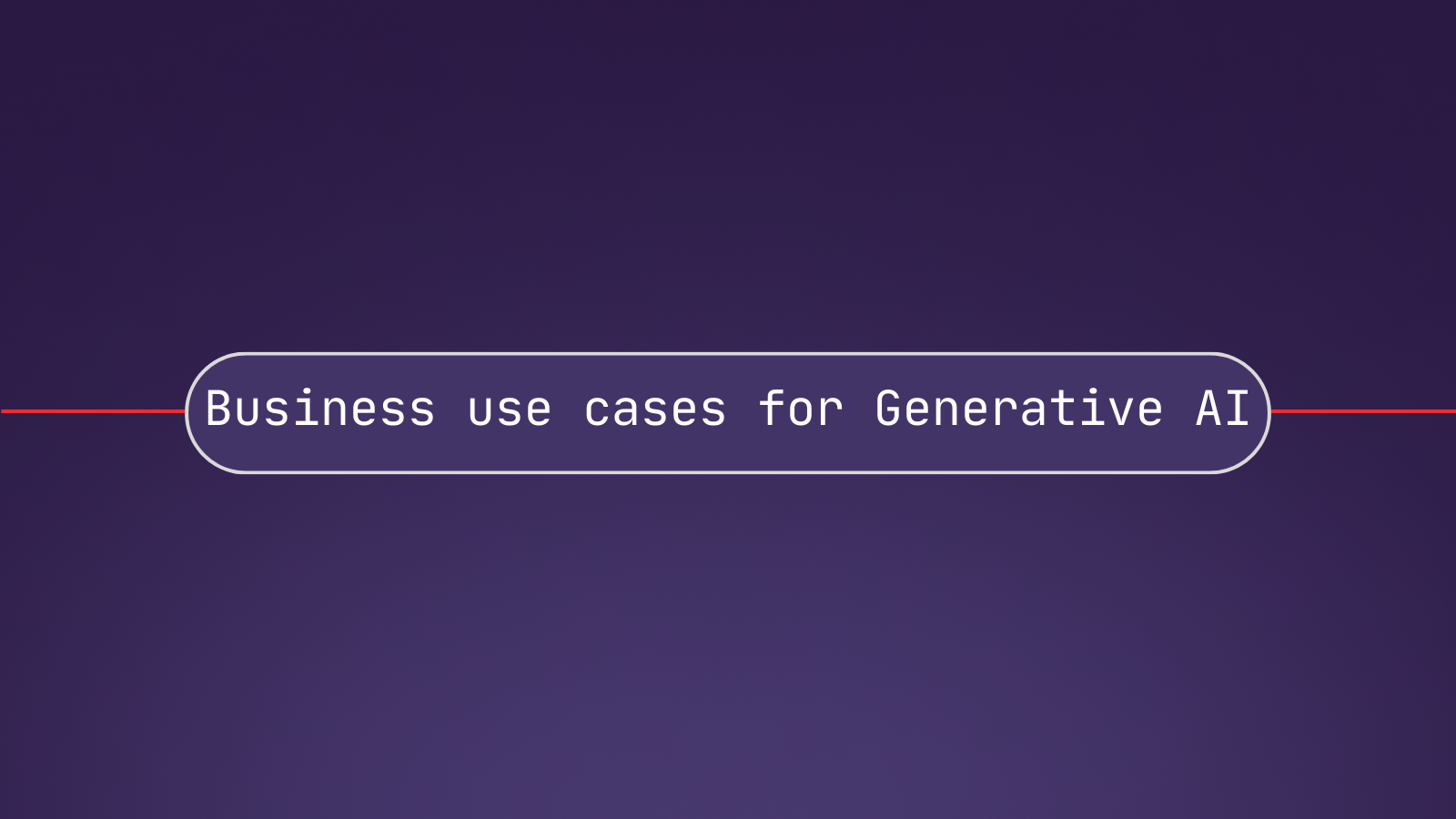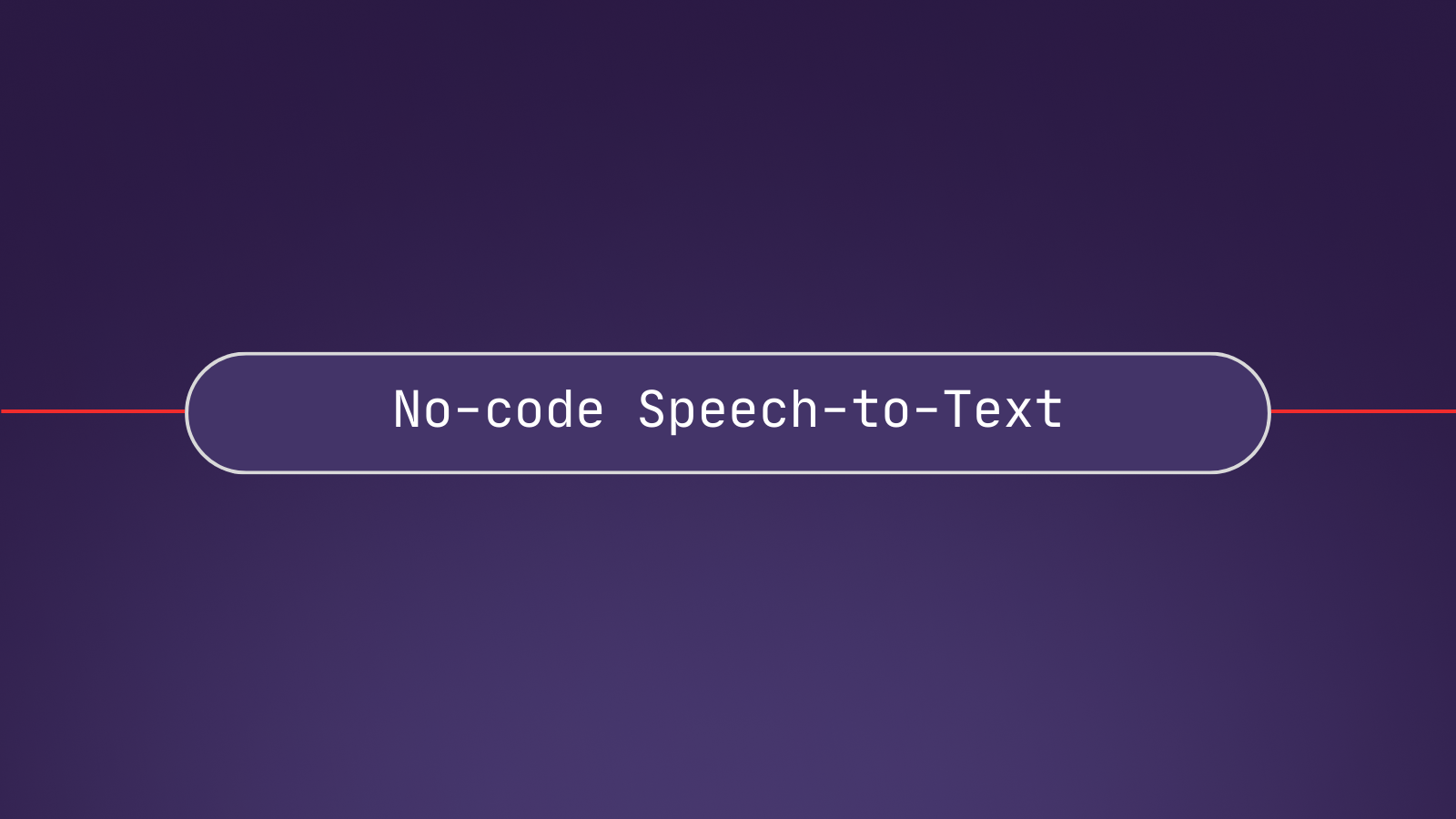Advanced Large Language Models (LLMs) are powering chatbots, image generators, and software that can handle complicated requests from users and return near-human results.
As businesses integrate this generative AI technology, they also unlock opportunities to enhance operations, improve the customer journey, and drive innovative product development.
In this article, you’ll learn more about building with LLMs and the top business use cases for Generative AI tools and applications.
What is Generative AI?
Generative AI is a broad category of artificial intelligence that enables machines to create new content with guidance from machine learning models. These algorithms do more than just understand and process data—they produce new, creative material based on that data.
Content generation can come in a variety of forms. Its versatility extends across domains, empowering businesses to create in unprecedented ways. Some examples of Generative AI include:
- Text generation: Language models are capable of generating coherent and contextually relevant text for content creation, language translation, and code generation.
- Image synthesis: Synthetic image models can render human faces, generate artwork, and enhance image editing tools.
- Music composition: Generative models can compose melodies, harmonies, and even entire musical compositions.
- Data augmentation: A technique using generative models that can create diverse and realistic variations of training data to help improve the robustness and generalization of machine learning models.
What are Large Language Models (LLMs)?
A Large Language Model (LLM) is a type of deep learning neural network trained on massive amounts of data and then fine-tuned for specific applications. OpenAI’s GPT-4 model is one example of an LLM that can understand the complex patterns in language and generate contextually appropriate responses.
For example, LLMs can be used to create tools that perform sophisticated audio analysis, enhance customer support interactions, create new creative content, and more.
LeMUR is a framework for leveraging different LLMs that allows companies to more easily build Generative AI audio analysis tools on top of spoken data, without having to string together multiple providers. LeMUR enables various use cases through a simple endpoint to help users generate custom summaries, automatically return action items at the end of a meeting, or receive answers to specific questions.
5 industry use cases for Generative AI
The capability of Generative AI applications to understand and create new content has immense potential in various industries. Whether you want to add customer-facing functions to your platform or develop in-house methods that streamline operations, here are five ways businesses can build powerful Generative AI applications that harness speech data.
Facilitate quality patient care
Despite declining rates since their peak in 2020, telehealth visits remain higher than pre-pandemic levels. According to data released in April 2023, about 22% of U.S. adults reported attending a telehealth appointment within the preceding four weeks.
The virtual platforms facilitating these meetings are crucial to delivering quality care, despite barriers that may keep patients from the physical office. Telehealth developers are responsible for creating software that is not only secure and reliable, but capable of supporting relationships between providers and their patients.
Speech data is an asset to telehealth—immediate appointment transcriptions can provide valuable information to both provider and patient, when the tools are integrated seamlessly.
Then, LLMs can be used to build additional patient- and provider-facing enablement tools.
At the individual appointment level, for example, an application using the LeMUR Custom Summaries task could send patients automatically generated follow-up emails with a description of their appointment. Additional features could include the option to automatically include any action items mentioned by the provider during the appointment.
Patient-facing applications could also utilize the LeMUR Question and Answer function to help patients query the transcript from their own appointment and ask questions such as “What did my doctor advise me regarding side effects?” or “When am I supposed to book my next appointment?”
Provider-facing implementations could also help them manage their practice as a whole. Imagine a Question and Answer integration that helps providers learn more about their patient population as a whole: What were the five most common reasons for an appointment this week?
Help businesses analyze customer interactions
Businesses that are constantly taking feedback and requests from customers over the phone are collecting massive amounts of data—but without a system in place, that data is unstructured and impossible to interpret as a whole.
Enter conversation intelligence platforms, which help businesses record and analyze conversations with customers. Tools offered might include Zoom or video call integration, transcription, and different data analysis services. For example, Speech AI models such as Sentiment Analysis or Topic Detection can make it easier for businesses to quickly understand thousands of hours of customer phone calls at once.
Software providers in this space can also harness Generative AI to add functionality to these platforms. For example, a feature using LeMUR’s Custom Summary function could generate a description of individual phone calls, or a batch of calls, immediately. Developers could also let users fully choose the type of summary they prefer by providing integrated customization options.
LeMUR’s Question and Answer function could also be implemented to let end-users query their phone call logs for immediate insights across all available data, or a specified time frame. What are the ten most common issues that customers were calling in this week? How often did customers ask for refunds yesterday? What were the most common solutions offered by the customer care team?
Assist creators’ content development
Video creators and editors, whether they are independent or work on behalf of an organization, are responsible for a long lifecycle of content production and management. From storyboarding and shooting to editing and all the subsequent repurposing and marketing, there are opportunities to develop tools that can help.
Software that integrates the LeMUR framework can help automate tasks. For example, video titles and descriptions are crucial to attracting the right audience and marketing content.
Using built-in Audio Intelligence features, creators can summarize the main topics in an audio file. Then, using LeMUR’s custom summary feature, creators can generate a description of the video and optimize it for social media, video platforms, or websites. AI-generated titles and descriptions can also take SEO strategies into account, helping make content more discoverable.
LeMUR can also be used to integrate functions that make repurposing video content easier. One such feature could take custom requests from video editors for timestamps of video highlights, making clip generation and editing more efficient.
Streamline live event marketing
In the event marketing space, preparation is paramount. However, there are some aspects that cannot be predetermined. Live social media posts, for example, are a great way to engage audiences beyond the people in the room.
Platforms like TweetDeck and Hootsuite are powerful tools to schedule posts and save time, but pre-written tweets can’t capture the unexpected moments during a live event. Developers who are building tools for marketers on-the-go can use the LeMUR framework to turn live events into immediate marketing assets.
With real-time speech-to-text models, live captions and transcripts are generated within a few hundred milliseconds using streaming. A LeMUR-powered application could then use this data to generate social posts based on a live interview, presentation, or conference session.
The option to integrate several social platforms and style guides could also make immediate formatting possible, ensuring generated copy adheres to brand guidelines and character limits.
Enhance learning management systems
Learning management systems (LMSs) are online platforms that store, manage, and deliver educational content for schools and businesses. Speech data is integral to these platforms—transcriptions of pre-recorded lectures and live meetings ensure that content is accessible to all students.
There are Generative AI applications for this data, too. For example, the LeMUR framework could be used to summarize live session content immediately following class and deliver the information to students. An LMS could add customization options for these summaries too, so educators can select preferences for how the summary is formatted or focused.
Additionally, LeMUR could also be applied to LMS platforms by automatically generating study guides based on lecture video recordings.
Learn more about Generative AI—from building your own coding assistant in Python to mastering prompt engineering—with AssemblyAI’s Generative AI video series on YouTube:









